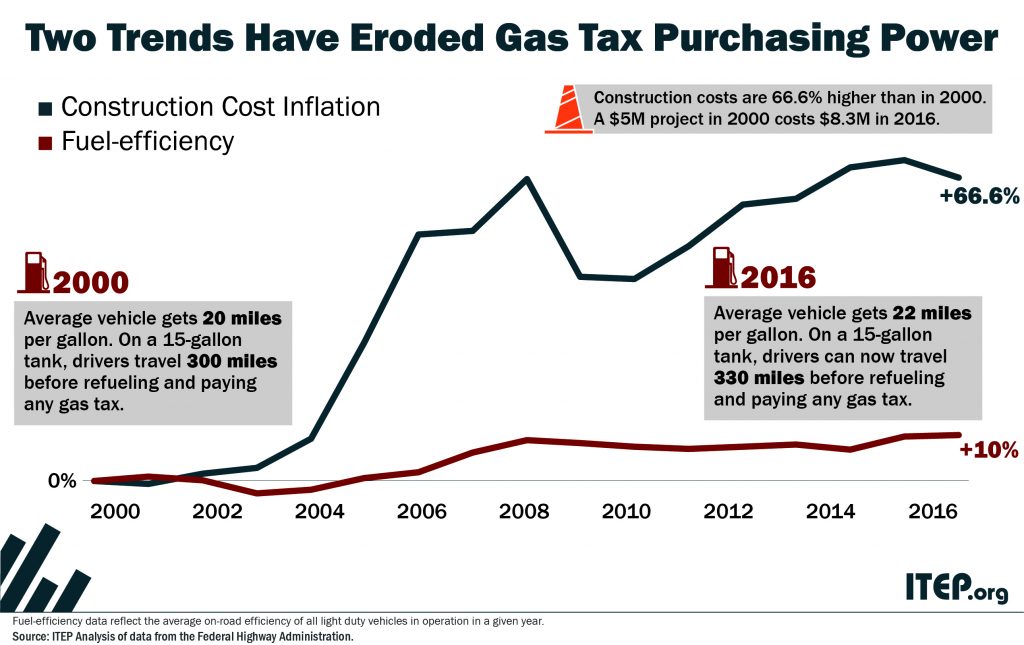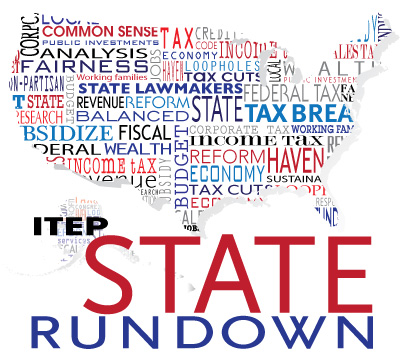
Michigan
Michigan League for Public Policy: News Flash: Michigan Taxes Are Still Upside-Down
October 17, 2018
While no news is often regarded as good news, in this case, it’s not. Michigan’s tax structure is still highly regressive, and taxes Michiganders with low incomes at a higher rate than Michigan’s wealthiest residents, according to a report by the Institute on Taxation and Economic Policy.

An updated version of this blog was published in April 2019. State tax policy can be a contentious topic, but in recent years there has been a remarkable level of agreement on one tax in particular: the gasoline tax. Increasingly, state lawmakers are deciding that outdated gas taxes need to be raised and reformed to fund infrastructure projects that are vital to their economies.
Michigan League for Public Policy: The Looming Danger of Tax Cut Triggers in Michigan
May 15, 2018
New analysis by the Institute on Taxation and Economic Policy (ITEP) uses current year and two-year forecasts to calculate the impact that a 0.1 or 0.25 rate reduction in the Personal Income Tax (PIT) could have on taxpayers and state revenue. The data shows that any reduction in the PIT actually shifts the tax load further to low-income Michiganders.
Michigan League for Public Policy: The EITC: The Good, The Great And The Unfortunate
January 26, 2018
According to modeling by the Institute on Taxation and Economic Policy, in 2019 about 1,400 fewer filers (about 0.4%) will qualify for the credit, resulting in $7 million in fewer federal credits being distributed to the state. By 2027 about 14,500 fewer filers (about 2%) will qualify for the credit, resulting in a loss of $96 million of federal credit value. The same filers who lose their federal EITC will also lose their ability to claim their state EITC, resulting in a loss of additional local economic support.
State Rundown 1/12: Tax Cut Tunnel Vision Threatens to Bore State Budget Holes Even Deeper
January 12, 2018 • By ITEP Staff

As states continue to sift through wreckage of the federal tax cut bill to try to determine how they will be affected, two things should be clear to everyone: the richest people in every state just got a massive federal tax cut, and federal funding for shared priorities like education and health care is certain to continue to decline. State leaders who care about those priorities should consider asking those wealthy beneficiaries of the federal cuts to pay more to the state in order to minimize the damage of the looming federal funding cuts, but so far policymakers in Idaho,…
Michigan League for Public Policy: The benefits of Deferred Action for Childhood Arrivals (DACA) on immigrants in Michigan
December 20, 2017
Researchers at the Institute on Taxation and Economic Policy (ITEP) estimate that nationwide, DACA enrollees contribute $2 billion in state and local taxes each year. In Michigan, these young adults contribute $13 million in state and local taxes annually. If federal elected officials fail to pass a replacement to DACA and beneficiaries’ work permits expire, […]
Michigan League for Public Policy: Immigrant families in Michigan: A state profile
October 18, 2017
Michigan immigrants also contribute millions in tax revenue each year, and in doing so help pay for important public programs and infrastructure in the state. In 2015 for example, undocumented immigrants in Michigan paid approximately $86.6 million in state and local taxes. Young undocumented immigrants also contribute their share in taxes. In 2015, DACA-eligible immigrants […]
Michigan League for Public Policy: Review tax expenditures to help fix Michigan’s broken revenue stream
May 18, 2016
“Michigan has a budget problem, and simply put, there just isn’t enough money to go around. Michigan has experienced crisis after crisis—the Great Recession, nearly record-high unemployment, municipal financial emergencies, the city of Detroit’s bankruptcy, the Flint water crisis and the financial struggles of Detroit Public Schools to name a few. In attempting to fix […]
Michigan League for Public Policy: The 2015 roads plan: Helps wealthy and hampers budget
December 18, 2015
“Finally, the income tax rollback that was thrown in as a sweetener has implications on the budget as well as tax fairness. Under the plan, if General Fund revenues grow by more than the rate of inflation, the rate of the income tax would be reduced. According to the House Fiscal Agency analysis, if these […]
